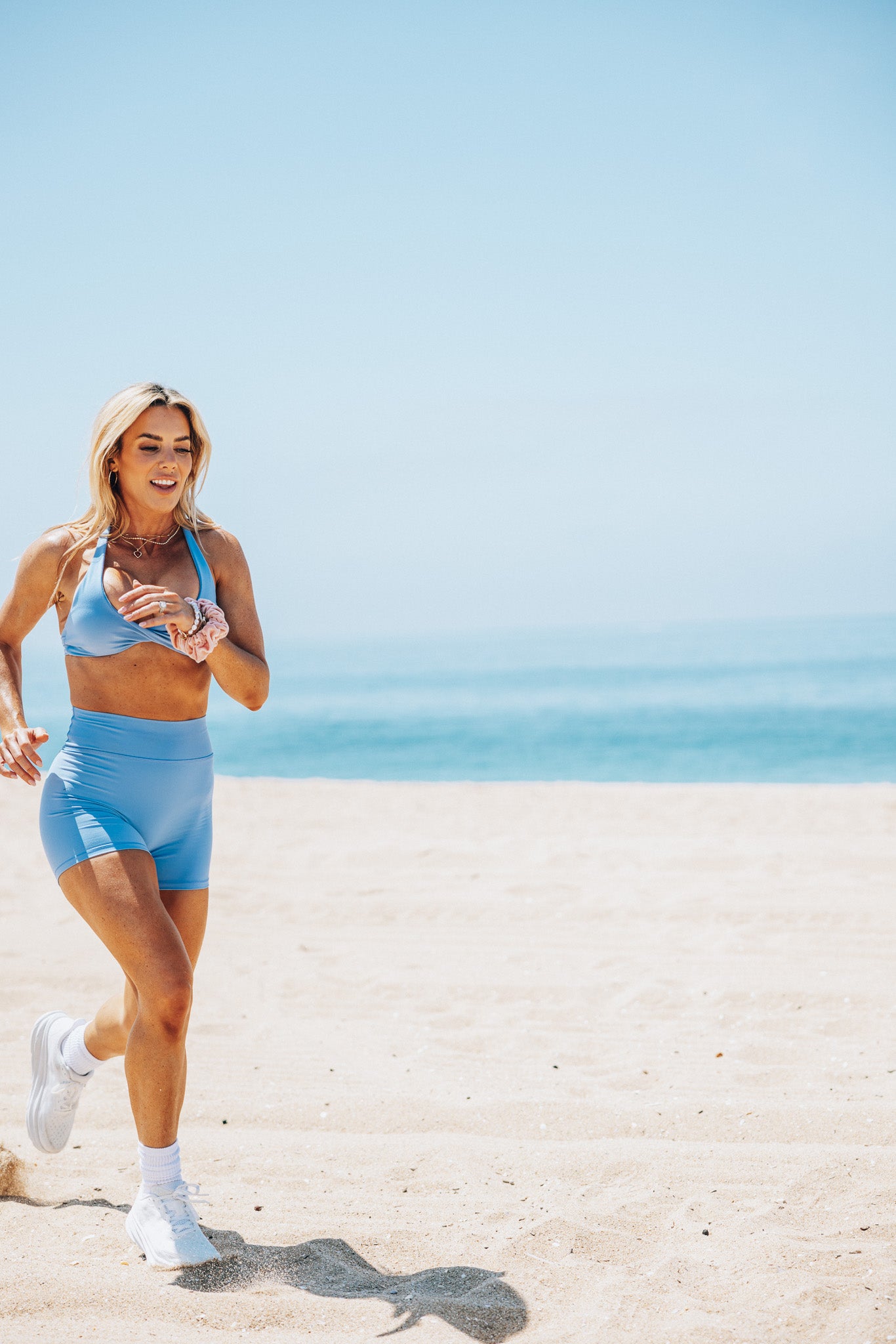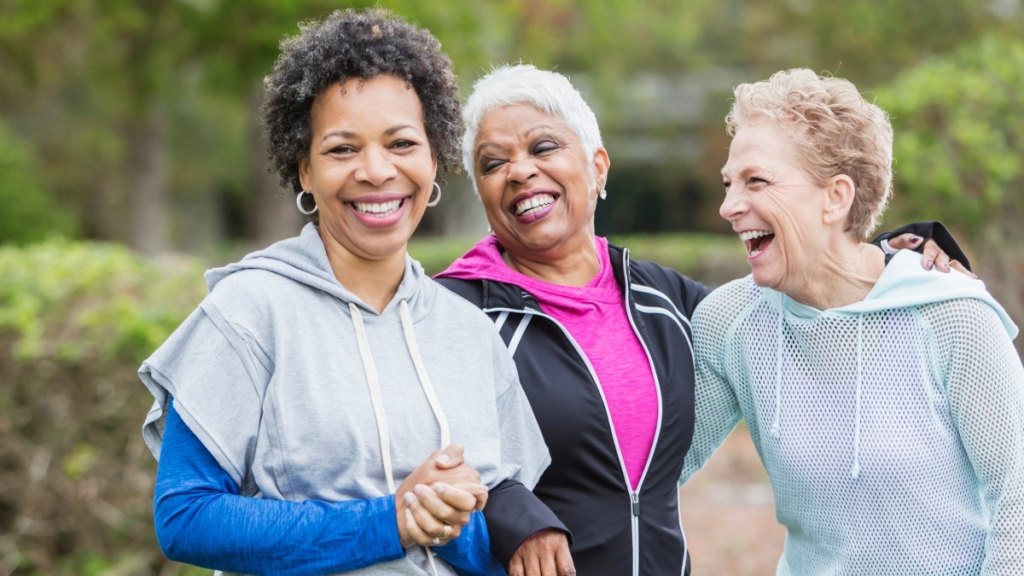Unlock These 6 Surprisingly Simple Biohacks That Instantly Supercharge Your Health—No Sweat Required!
“This helps anchor your internal clocks and trigger the release of hormones like cortisol during the day and melatonin at night, supporting a healthy sleep-wake cycle,” says Dr. Dal Farra. Catching a.m. rays has been found to shorten the time needed to fall asleep, improve sleep duration by about 11 minutes, reduce middle-of-the-night waking, and produce better sleep quality, per one study. By the end of my first week, I noticed that it was easier to drift off at night. Plus, it was a calming moment before my two grade school–age boys came lumbering down the stairs.
2) Take a Walk, Every Day
Far from fancy, walking is free and easy—no workout class sign-ups to fret about. I have a dog who is ready for a walk anytime, so I had no problem getting in 30 minutes a day, which is the amount Dr. Robbins recs. What’s fascinating about making it a habit is that walking is the ultimate exercise multitasker, offering these benefits:
- Helps joints stay mobile
- Boosts bone health
- Aids digestion
- Decreases inflammation (a driver of chronic disease)
- Stabilizes blood sugar levels, especially if you go out after a meal
- Manages stress
- Lowers blood pressure
- Provides social connection if you BYOF (bring your own friend)
Also amazing: the long-term brain boost. Maintaining a midlife exercise routine is associated with fewer amyloid plaques (a factor in Alzheimer’s disease) compared to being more sedentary, and it helps preserve the thickness of your cerebral cortex—the outer layer of the brain responsible for higher-level functions like memory, learning, and decision-making—per research in the journal Alzheimer’s & Dementia. Sedentary behavior and brain atrophy go hand in hand, say researchers, but physical activities like walking pump up the brain’s gray matter.
Need a little help in making walking a regular part of your routine? Get the WH+ Exclusive 4-Week Walking Plan that’ll help you burn fat and build muscle at the same time.
3) Sign Up for Something New
When preventive cardiologist Danielle Belardo, MD, decided to try ballet for the first time as an adult in her late 30s, she had no idea of all the benefits it would bring. “I signed up only to enjoy and learn,” she says. Dr. Belardo quickly realized that the mental challenge minus the pressure to perform was a unique part of pirouetting as an adult. Plus, the social perks were immense, with women in their 20s through 60s in the class. “We are all different ages and athletic abilities, but we’ve bonded as a group,” she says. “It’s taught me that it’s never too late to try something new.”
This reminds me of my own journey back to gymnastics, which I started again at age 41 after nearly two decades away from the sport. I’m flipping and doing other physical feats I never thought possible; it’s built a sense of self-confidence that makes me step back and think, Wow. To say nothing of the strength, balance, and flexibility gains, which Dr. Belardo says she’s found in ballet too. Your next move doesn’t have to be a sport, but it should feel challenging and make you nervous in an excited sort of way. Sign up to learn padel, calligraphy, or flower arranging.
4) Take Time to Reset—for Real
As someone who convinced herself that doomscrolling was the way to wind down, I know how difficult it can be to fit relaxation into your day. Yet it’s essential—and experts recognize this. “I’ve learned the hard way that too much stress has bad health effects because of the constant surge of stress hormones,” says Dana Ellis Hunnes, PhD, MPH, a senior clinical dietitian at UCLA Medical Center, who admits to experiencing burnout over the past several months. Taking a time-out is essential for her now, whether that’s five minutes of yoga, reading, or stargazing.
We all have stress, but allowing it to build up is linked with faster cellular aging, according to research from Yale University. One thing that helps slow down that aging clock? Emotional regulation. Dr. Dal Farra likes cardiac coherence breathing for this, which is a type of diaphragmatic breathing in which you inhale through your nose for five seconds, feeling your belly rise, then slowly exhale through your mouth for another count of five. “This has been shown to significantly reduce stress and anxiety—basically helping you reset and recenter,” she says. It has become a personal go-to whenever I need to find calm and collect myself.
5) Eat Foods That Lower Inflammation
Fill your plate with colorful fruits and vegetables—it can’t be said often enough. “What we choose to eat can turn genes on and off to lower inflammation,” says Melissa Young, MD, a functional medicine specialist at Cleveland Clinic. Go for purples, reds, dark greens, and more—eat the rainbow—to get a variety of plant compounds, like antioxidants and polyphenols, which neutralize cell-damaging free radicals implicated in chronic diseases that occur with age.
I love this rainbow-first approach because it gives me the freedom to decide what to eat based on what I like (broccoli—really!) and don’t (eggplant, I’m sorry!) without worrying about trying to eat buzzy superfoods I’m not jazzed about.
6) Give Your Gut a Break
Intermittent fasting may be trendy, but skip the 24-hour water fast the tech bros love. Twelve to 14 hours is all you need for a productive fasting period, says Dr. Young. (That’s really just not eating between dinner at night and breakfast the next morning. ) “Fasting promotes autophagy, the process [in which] our body clears out damaged cells to allow for regeneration of new ones,” she explains.
This break also gives your digestive system downtime, discourages acid reflux, and improves metabolic health by decreasing insulin resistance. Metaphorically closing the kitchen was key for me; it promoted better digestion without hunger pangs or brain fog. See, longevity hacks don’t have to make you suffer—and you can feel good doing them.
What Is Biohacking, Anyway?
The basic definition is “the art and science of optimizing human performance,” says functional medicine specialist Melissa Young, MD. “These are intentional changes in lifestyle practices to maximize our health so we can live a healthier, longer life.” But the idea of biohacking has taken a turn recently, as bro culture has co-opted the movement to be about waking up at 4:30 am, avoiding vegetables, and now, eating raw chicken. (Yes, it’s real. Yes, it’s gross—and strongly not recommended.) “Throughout time, people have used strategies to enhance human capabilities. There will always be fringe elements and those who look to push the envelope,” says Dr. Young. “Biohacking has evolved, but for most women, the basics are safe ways to support well-being.” Implementing small changes (a.k.a biohacks) over time promotes what longevity experts are now focusing on: healthspan. “People want to live longer,” Dr. Young says, “but they want to live longer remaining healthy and without chronic conditions.” Hear, hear.














Post Comment